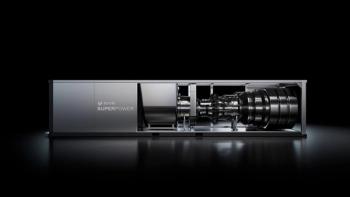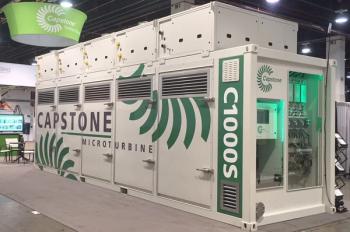
- January/February 2020
R.I.P. POWERGEN EUROPE
After two decades of attending PowerGen International in the U.S. each winter, I made my first visit to PowerGen EU. What a difference to the U.S. version. The European show was largely about transmission and renewable energy with a declining emphasis on traditional generation.
Let’s track back a couple of years to understand the shift. Pennwell owned the PowerGen brand for decades. Clarion acquired Pennwell and combined PowerGen EU with its own European Utility Week show. Strolling through the exhibit floor, the PowerGen booths were over to one side. They were outnumbered by those from utilities, renewable players, electricity component manufacturers, smart grid providers, digitalization vendors & software developers.
And then came the opening keynotes. Instead of rousing speeches from turbomachinery OEMs or utility executives, up came the head of the International Renewable Energy Agency. A host of speakers followed, promoting decarbonization, renewable energy and the elimination of natural gas generation from the grid by 2030. I’ve attended plenty of wind power and solar conferences in my time and this had a similar vibe.
Clarion took it a stage further by rebranding the show. The PowerGen EU and European Utility Week brands have been consigned to history. Enlit is the new title of the event. That brand is set to roll out across Europe, Asia and Australia ― but not in the U.S., at least for now.
The plan is for Enlit to become, “the world’s only complete energy event, bringing clarity to the global energy transition and defining the roles of all those involved in powering the next generation of the industry.” This shift may mirror shifting political winds, stated government objectives and public opinion in some regions.
But there is one small problem. It leaves no European show with a traditional generation focus. Despite the tremendous headway made by renewables and their positive perception in the broad public, Europe remains dependant on coal, natural gas and nuclear for the bulk of its power. Advocacy to defund and close these power sources down may not be the wisest course.
I’m reminded of what happened in the U.S. after WWII. Cars were said to be the way of the future. Outmoded railways and city trams were to be eliminated. Freeway construction boomed.
Within a decade, the city, regional and national rail and tram networks had been decimated. Yet today, cities are hurting badly for lack of much cheaper and more efficient tram and rail networks.
Projects are underway to bring fast rail transport to a wider area of the continent. Clearly, it was not an either-or proposition. There was a need for both rail and road transport. Yet the prevailing winds of progress demanded the rapid demise of rail. Billions in operational infrastructure and tracks were either ripped up or left to rust.
The zeal currently exhibited in Europe to eradicate the use of natural gas for power generation could be a similar case in point. An article in this issue delves into the numbers behind a series of studies that attempt to find a pathway to the removal of natural gas generation and the achievement of carbon neutrality in Europe. They lean heavily on unproven technologies. Each of the possible approaches discussed could eventually play a major role in future grid configurations. But the removal of natural gas from the power sector is unlikely to be attained in 2030, 2040 or even 2050.
In support of this, the continent currently has dozens of LNG import terminals and is building many more. In other words, huge sums continue to be invested in natural gas delivery infrastructure. It may be politically popular to condemn gas along with coal and nuclear. But natural gas isn’t going anywhere ― even in Europe.
Different U.S. flavor
Meanwhile, the PowerGen International event in New Orleans in December, 2019 had a different flavor. Yes, there was plenty to say about the potential of hydrogen, the progress being made in energy storage and the growth of renewables.
But the North American show had a better balance between fossil and renewable sources. You can read reports from the European and North American shows inside. The issue also contains valuable material on turbomachinery-based energy storage, gearbox testing, an overview of the controls marketplace and our usual informative columns.
The next issue will provide a report from the Baker Hughes Annual Meeting in Florence, Italy. Expect to hear plenty about LNG and shale. By the time you read this, we will also be attending the Western Turbine Users Group in Long Beach, California. We hope to see you there.
Articles in this issue
over 5 years ago
Rotoflow Turboexpandersover 5 years ago
Can natural gas generation survive?over 5 years ago
Gear tooth contact patternover 5 years ago
PowerGen EU shifts emphasis from fossil fuels to renewablesalmost 6 years ago
Myth: You can always learn something from failurealmost 6 years ago
How to mitigate failure mechanisms caused by residual stressesalmost 6 years ago
PowerGen Internationalalmost 6 years ago
Protecting new equipment before installing offshoreNewsletter
Power your knowledge with the latest in turbine technology, engineering advances, and energy solutions—subscribe to Turbomachinery International today.





